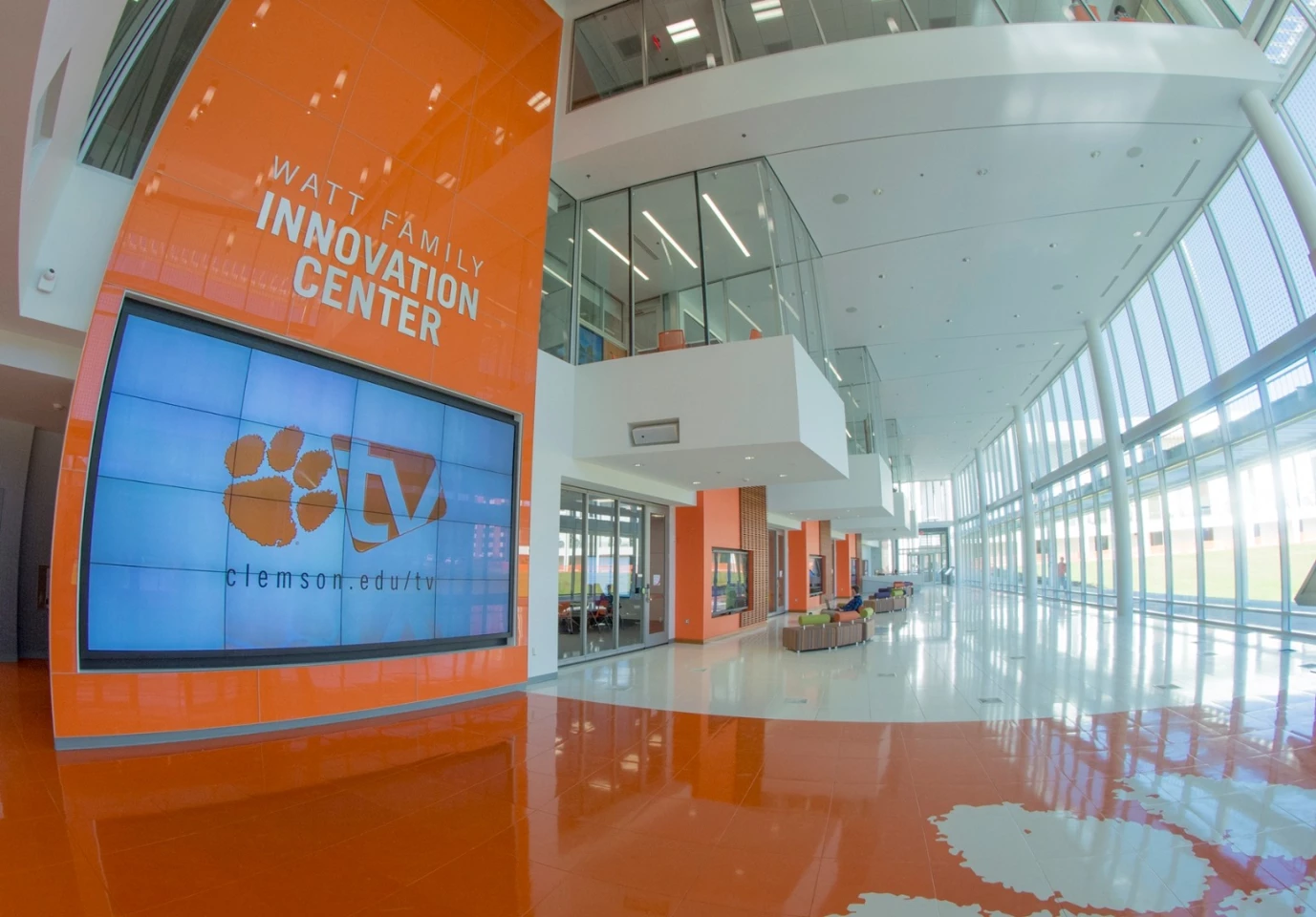Using Philips' LED and Power over Ethernet (PoE) tech, the new intelligent lighting system at the recently opened Watt Family Innovation Center at Clemson University in South Carolina is set to deliver energy savings of around 70 percent.
We've seen Philips deploy this combination of technology previously at the Edge building in Amsterdam, Netherlands, which was subsequently certified as the most sustainable office building in the world by BREEAM. The Clemson University installation, meanwhile, is said to be the first large-scale PoE lighting installation at a major university campus.
The recently opened Watt Family Innovation Center uses "state-of-the-art information technology and special facilities" in an effort to provide an environment in which students can collaborate with faculties and leaders from industry and government agencies to generate ideas and solve problems.
Lighting technology is part of that. The use of LEDs instead of conventional lighting makes for a more efficient setup straight away and coupled with the functionality of PoE technology, the overall energy savings are pegged at around 70 percent when compared to similar buildings using conventional lighting.

PoE lighting uses Ethernet cables to power individual light points, meaning that data can be sent to and from the lights. Light point usage and conditions can therefore be monitored, as well as information provided by additional sensors that can be installed in the light fitting. Furthermore, the data capability can provide a greater level of control over LED lighting.
One means of saving energy employed by the system, Philips tells Gizmag, is known as "daylight harvesting." The light points are able to detect how well lit a room is as a result of natural light from outside and to automatically raise or lower their own brightness as required.
The Clemson system tracks data from each light fixture to determine whether or not a room is occupied and detect movement using passive infrared sensors, sometimes in combination with ultrasonic sensors.

Both historical and real-time data is used to inform automated operation of the system. Lights can be automatically switched off, for example, at times when rooms are typically not used or can be switched on when people enter a room.
In addition, the lighting can be controlled manually using the Philips EnvisionManager console or by using any authorized smartphone, tablet or computer.
As well as the PoE LED lighting system, the Watt Family Innovation Center boasts the largest media façade installation in the US. Each of the 45,000 Philips iColor Flex LMX gen2 LED nodes can be controlled individually in a variety of different ways. The display acts as a digital canvas upon which messages and graphics can be shown.
Source: Philips, Clemson University






